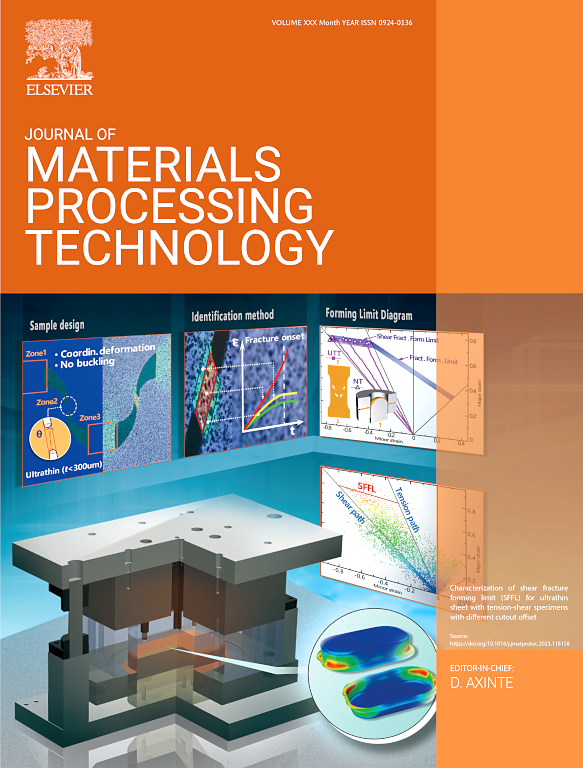Influence of grain morphology on the chip formation mechanisms of wrought and laser powder bed fusion (LPBF) fabricated alloy 718
IF 6.7
2区 材料科学
Q1 ENGINEERING, INDUSTRIAL
Journal of Materials Processing Technology
Pub Date : 2025-01-19
DOI:10.1016/j.jmatprotec.2025.118740
引用次数: 0
Abstract
Understanding the role of grain morphology in the chip formation mechanism during orthogonal cutting is crucial to achieve reliable surface integrity. This is especially important when machining additively manufactured alloys due to the inherent presence of crystallographic textures from their unique grain growth patterns. In this work, wrought and laser powder bed fusion (LPBF) fabricated Alloy 718, representing equiaxed and elongated grains respectively, were employed as the case studies to investigate the influence of grain morphology on the chip formation. A new customised Quick-Stop module was designed for a pendulum-based cutting device to retain the chip on the workpiece. This approach allows the characterisation of oriented grain deformation and quantification of texture evolutions from the workpiece to the chip. By retaining deformed grains near the primary shear zone, it was found that the elongated grains in LPBF-fabricated Alloy 718 significantly influenced the material pile-up behaviour along the shear direction when compared with the equiaxed grains in the wrought sample, leading to an increase in shear angle and decrease in chip ratio. This is because the transition of shear deformation from the cutting edge to free surface is hindered by long grain boundaries that are perpendicular to the cutting direction. Since the shear bands are hard to cross long grain boundaries, the deformation is governed by grain boundary bending in the primary shear zone. In addition, it is revealed that the original textures in the wrought and LPBF-fabricated Alloy 718 tend to evolve into A-type and C-type shear textures respectively during chip formation. This indicates that the slip system family {111}< 112 > is easier to be activated in wrought 718 but < 110 > -directional slip is dominated in LPBF-fabricated 718.
求助全文
约1分钟内获得全文
求助全文
来源期刊

Journal of Materials Processing Technology
工程技术-材料科学:综合
CiteScore
12.60
自引率
4.80%
发文量
403
审稿时长
29 days
期刊介绍:
The Journal of Materials Processing Technology covers the processing techniques used in manufacturing components from metals and other materials. The journal aims to publish full research papers of original, significant and rigorous work and so to contribute to increased production efficiency and improved component performance.
Areas of interest to the journal include:
• Casting, forming and machining
• Additive processing and joining technologies
• The evolution of material properties under the specific conditions met in manufacturing processes
• Surface engineering when it relates specifically to a manufacturing process
• Design and behavior of equipment and tools.
 求助内容:
求助内容: 应助结果提醒方式:
应助结果提醒方式:


